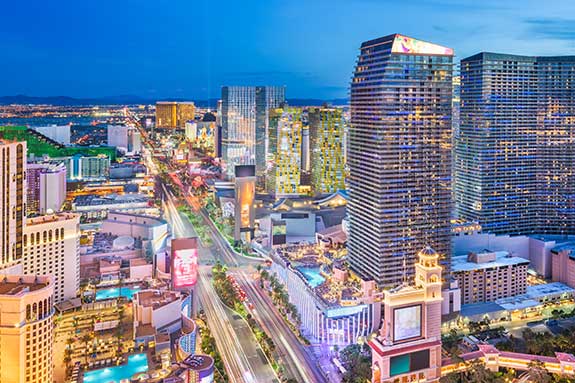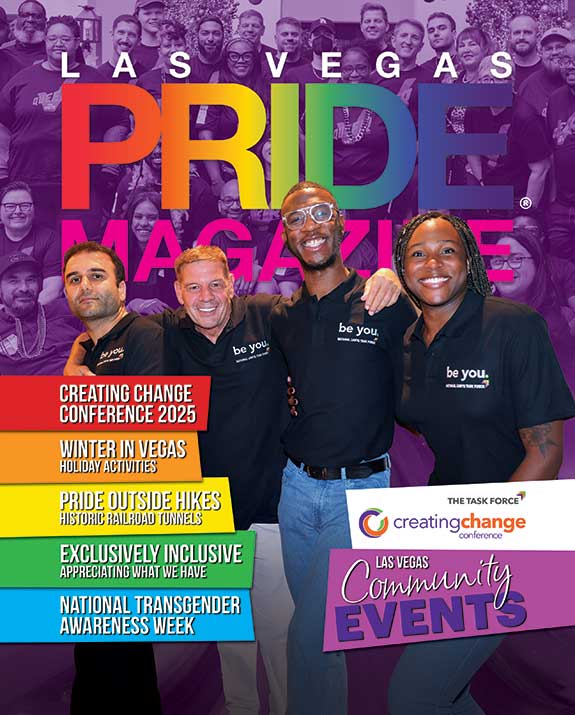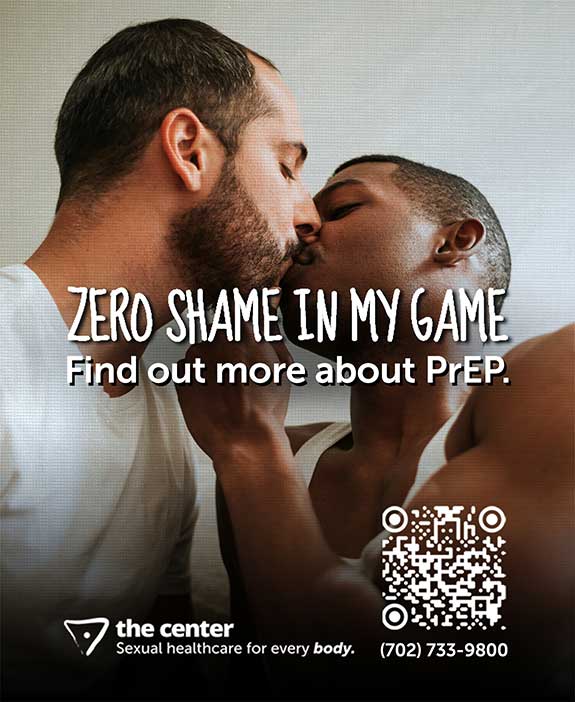A Vibrant Evolution: Exploring the LGBTQ+ Scene in Las Vegas
By Las Vegas PRIDE Magazine Staff
Las Vegas has long been known as a city of glitz, glamour, and reinvention, but its LGBTQ+ scene holds a fascinating history that blends resilience with celebration. From the early days of underground gatherings to the present vibrant and diverse community, Las Vegas’s LGBTQ+ scene has been shaped by iconic figures, pivotal moments, and an unwavering push for equality.

The Beginnings: A Secret Subculture
In the 1950s and ’60s, Las Vegas was booming, but for LGBTQ+ individuals, the climate was not welcoming. Queer individuals gathered in covert spaces and secret gatherings, protecting their identities at a time when being out was dangerous. Despite the city’s reputation for freedom, strict anti-sodomy laws and police crackdowns led many LGBTQ+ residents to live in secrecy.
In these early years, figures like Liberace, known for his flamboyant style and closeted persona, became symbols of coded rebellion. While he never publicly identified as gay, Liberace’s persona and visibility on the Strip subtly challenged heteronormative standards, offering a glimmer of pride to LGBTQ+ audiences. His legacy has since become an iconic part of the city’s queer history.
The Rise of Iconic LGBTQ+ Spaces
By the 1970s and ’80s, Las Vegas saw a shift as some LGBTQIA+ friendly establishments began to emerge. These included nightclubs like Snick’s Place and Gipsy, which became cornerstones of the city’s underground queer nightlife. Though small, these spaces were vital for the LGBTQIA+ community, offering refuge and celebration amidst a hostile social and legal landscape.
Establishing openly LGBTQIA+ spaces created the foundation for a supportive community, and regular patrons became activists and advocates. This era also saw the early LGBTQIA+ organizations taking root in the city, building networks and support systems that continue today.
The Fight for Rights and Recognition
The AIDS crisis of the 1980s and early ’90s had a profound impact on the Las Vegas LGBTQIA+ community. As the epidemic claimed lives, the community mobilized to provide support, awareness, and activism. Organizations like Aid for AIDS of Nevada (AFAN) emerged, offering much-needed resources and support for those affected by HIV/AIDS. The annual AIDS Walk, which began in 1991, remains one of the largest fundraising events for LGBTQIA+ health in Nevada, symbolizing the community’s strength and resilience in the face of adversity.
The ’90s also saw increased LGBTQ+ political activism in Nevada. In 1993, Senator Lori Lipman Brown used her platform to advocate for LGBTQ+ rights. Activists pushed for anti-discrimination legislation, though it was a long and challenging journey. By 1999, Nevada became one of the first states to implement a hate crime law that included sexual orientation, marking a significant victory for LGBTQ+ residents.

Modern Times: Drag Queens, PRIDE, and Mainstream Visibility
In the 2000s, Las Vegas became a beacon for LGBTQIA+ tourists, and the scene expanded with new LGBTQIA+ friendly venues and inclusive events. The Sin City Sisters of Perpetual Indulgence, a local LGBTQIA+ activist and charity group, began hosting community fundraisers and events. The arrival of RuPaul’s Drag Race in the late 2000s brought an explosion of interest in drag, and Las Vegas became home to some of the show’s top stars, like Coco Montrese and Derrick Barry, who contributed to the city’s status as a drag hub.
Las Vegas PRIDE, initially a modest celebration, evolved into a city-wide event attracting thousands of attendees yearly. The Las Vegas Strip itself now illuminates with rainbow colors during PRIDE Week, demonstrating the city’s shift from tolerance to celebration. Annual events like the PRIDE Festival and PRIDE Night Parade highlight the progress made in achieving visibility and acceptance.
Pivotal Moments and Key Figures Shaping Today’s Scene
Las Vegas LGBTQIA+ culture today is a tapestry woven with the contributions of countless advocates, entertainers, and community leaders. Pivotal figures like Lori Lipman Brown and allies such as Congresswoman Dina Titus helped set legal precedents for LGBTQIA+ rights in Nevada. Meanwhile, entertainers and drag stars have helped bring LGBTQIA+ art forms to mainstream audiences.
Organizations such as The LGBTQIA+ Center of Southern Nevada, also known simply as “The Center,” offer community services, from youth support to healthcare advocacy, continuing the legacy of activism and support. Similarly, The Nevada Gay Rodeo Association and groups like The Lambda Business Association provide networking and outreach opportunities that highlight the diversity of the community.
The Las Vegas LGBTQIA+ Scene Today: A Legacy of Resilience and Celebration
The Las Vegas LGBTQ+ scene has come a long way from secret gatherings and coded performances. Today, it is an integral part of the city’s social and cultural fabric, embraced by locals and visitors alike. Las Vegas has earned its reputation as an LGBTQIA+ friendly city, not only as a top destination for queer tourists but as a place where LGBTQIA+ residents live with greater visibility and acceptance.
Las Vegas’s journey from hidden clubs and quiet gatherings to vibrant parades and city-wide celebrations speaks to the resilience of the LGBTQIA+ community. Iconic entertainers, fearless activists, and relentless advocates have fought to make Las Vegas a safer, more inclusive city, ensuring that the community’s legacy of resilience and celebration endures.
This article was originally published in the 2024 Winter Issue of Las Vegas PRIDE Magazine, and can be read in its original format here.


